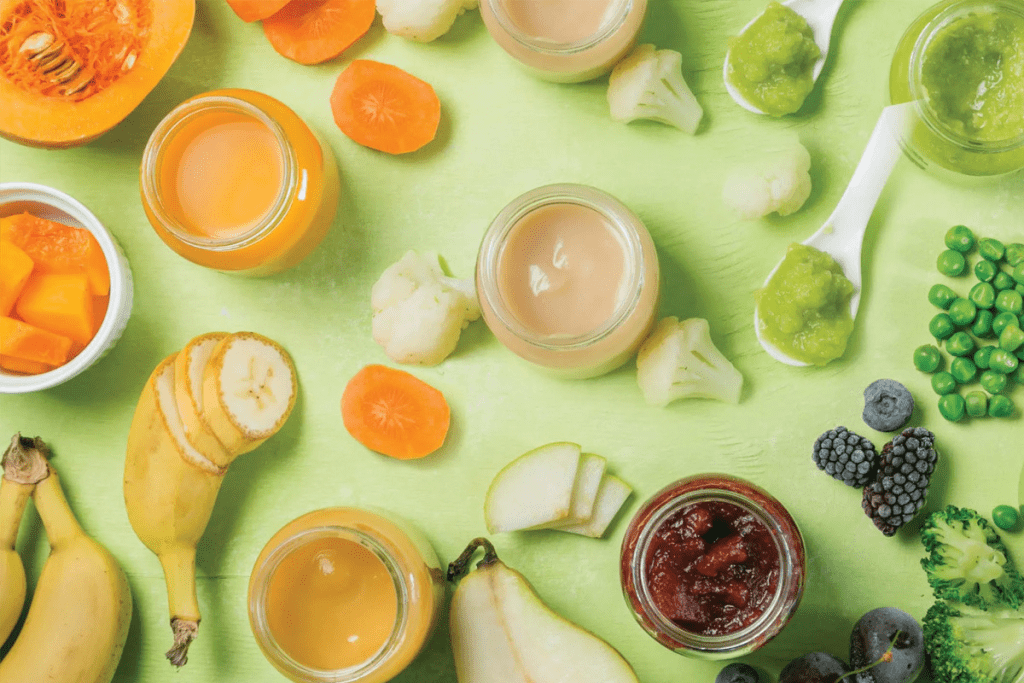Last Updated on November 13, 2025 by
How can I raise my child’s iron levels quickly? Beat anemia with quick, powerful iron-boosting strategies. Crucial and amazing advice for parents.
Iron is key for our kids’ growth and health, helping carry oxygen. If iron levels fall, it can cause iron deficiency. This can make them feel tired and affect their thinking.

As parents, we aim to give our kids the best care. Studies show that iron supplements can help. We’ll look at ways to quickly and safely boost your child’s iron levels.
It’s important for parents and caregivers to know about iron deficiency and anemia in kids. Iron deficiency happens when the body doesn’t have enough iron. This mineral is key for making hemoglobin, which helps red blood cells carry oxygen.

Several things can lead to iron deficiency in kids. The Mayo Clinic says babies and toddlers are at high risk. This is because of early birth, diet, and health issues.
Babies born early might not have enough iron. Toddlers might not eat enough foods rich in iron. Other causes include a diet low in iron, blood loss from ulcers or parasites, and more iron needs during growth spurts.
Iron deficiency and anemia are not the same, though they’re often mixed up. Iron deficiency means the body’s iron stores are low. If not treated, it can turn into iron deficiency anemia.
Anemia is when the body doesn’t have enough healthy red blood cells. This makes you feel tired and weak. Iron deficiency anemia happens when iron stores are so low that the body can’t make enough hemoglobin for red blood cells.
Iron deficiency is a big health issue in the U.S., affecting some groups more than others. The CDC says it’s common in toddlers and teenage girls.
Things like diet, money status, and health issues play a part. Knowing these can help spot kids who might need help.
It’s important to know the signs of low iron in kids early. Iron deficiency can affect their health, behavior, and learning. Catching it early is key.
Iron deficiency can cause several physical symptoms. These include:
Iron deficiency can also affect a child’s behavior and learning. Some signs include:

Some signs of iron deficiency are less obvious but just as important. Here are five unusual signs:
Knowing these signs can help parents spot iron deficiency early. This ensures kids get the help they need quickly.
Iron is very important for kids’ growth. It helps their brains work well and gives them energy. It’s a key nutrient for kids to grow and develop properly.
Iron is key for kids’ brains. It helps make hemoglobin, which carries oxygen. This oxygen is vital for the brain to work right.
Cognitive Development: Not having enough iron can hurt kids’ brains. It can cause problems with learning and thinking. So, it’s important for kids to get enough iron.
Iron is also important for kids’ bodies. It helps carry oxygen to muscles. Without enough iron, kids might feel tired and weak.
Physical Growth: Iron helps muscles store oxygen. This is important for kids to be active and have lots of energy. Kids need enough iron to grow strong and stay energetic.
“Iron deficiency can lead to significant impairments in physical performance and overall health in children.”
Not treating iron deficiency can harm kids a lot. It can make them tired, do poorly in school, and get sick easily. In bad cases, it can slow down their growth and hurt their brains.
It’s very important to make sure kids get enough iron. This can be through food or supplements. This helps prevent long-term problems and keeps kids healthy and growing well.
Managing childhood anemia often requires medical steps tailored to the child. We will look at the tests and treatments doctors use.
Doctors use blood tests to diagnose anemia in kids. The Complete Blood Count (CBC) is key. It checks hemoglobin and red blood cell count.
If the CBC shows anemia, more tests might follow. These could include iron level tests and ferritin tests to check iron levels. Sometimes, a bone marrow biopsy is needed to rule out other issues.
Treatment for iron deficiency anemia often includes iron supplements. Prescription iron supplements are usually better than over-the-counter (OTC) ones. They have higher doses or different types that work better for some kids.
Choosing between prescription and OTC supplements depends on the child’s age, weight, and anemia level. It’s important to follow the doctor’s advice to get the right dose and avoid side effects.
In severe cases of anemia, or with significant blood loss, more intense treatments are needed. Blood transfusions can quickly raise red blood cell count and improve oxygen delivery.
Other treatments depend on the anemia’s cause. For chronic disease anemia, managing the disease is key. For vitamin deficiency anemia, vitamin supplements are given.
Every child is different, and the best treatment is one that fits their unique needs and health.
Eating foods high in iron can boost your child’s iron levels and health. It’s key to feed your child the right foods to fight iron deficiency. This supports their growth and development.
Animal-based foods are top choices for iron, thanks to heme iron. This type is easier for the body to absorb than non-heme iron in plants. Here are some great animal sources:
Non-heme iron in plants isn’t as easily absorbed as heme iron. Yet, many plant foods can boost your child’s iron. Here are some:
Adding these iron-rich foods to your child’s meals is easy. Mix beans into soups, salads, or pasta. Serve fortified cereals with milk or yogurt for breakfast. Nuts and seeds make great snacks.
By mixing these foods into your child’s diet, you help keep their iron levels healthy. This supports their growth and development.
Getting enough iron is just the start. We must also focus on how well our bodies absorb it. By choosing the right foods, we can boost our child’s iron levels.
Some foods can really help our bodies absorb iron better. Vitamin C is a key player, helping our bodies use iron from plant-based foods. Foods like oranges, grapefruits, and lemons are packed with vitamin C.
Drinking orange juice with iron-rich foods can make a big difference. Adding sliced bell peppers or a bit of lemon to meals can also help.
Some foods can actually block iron absorption. Drinks like tea and coffee have compounds that reduce iron use. Foods with phytates, like bran, can also block iron from plant sources.
To improve iron absorption, we should limit these foods. Drinking tea or coffee between meals can help avoid blocking iron.
Planning meals carefully is key to better iron absorption. We can create meals that not only provide iron but also help our bodies use it better.
For example, eating iron-rich foods with vitamin C can greatly improve absorption. A good breakfast might be oatmeal with bananas and iron-fortified cereal, topped with orange juice. A lunch of chickpeas, spinach, and bell peppers with citrus dressing is also effective.
By choosing the right foods, we can help our children absorb iron better. This keeps their iron levels healthy.
Iron deficiency in children can be tackled by knowing their age-specific needs. As kids grow, so do their iron needs. Parents face new challenges to ensure they get enough iron.
Infants need a lot of iron, most between 4 to 12 months. Breast milk is a good iron source, but they need more as they grow. We recommend iron-fortified cereals and pureed meats.
It’s also important to limit cow’s milk. It can cause bleeding in the intestines, leading to iron loss.
Toddlers often don’t want to eat, making it hard to get them to eat enough iron. We suggest making iron-rich foods fun by adding them to dishes they like. For example, add finely chopped iron-rich meats to pasta sauces.
Using fortified cereals in baking is also good. Vitamin C helps iron absorption, so pair iron-rich foods with vitamin C-rich foods like citrus fruits or tomatoes.
School-age kids need a balanced diet to keep iron levels healthy. Include lean meats, beans, and fortified cereals in their meals. Teach them about nutrition and let them help with meal planning.
Using cast-iron cookware can also boost dietary iron, when cooking acidic foods like tomatoes.
By focusing on the specific needs of each age, we can better fight iron deficiency. This supports their health and growth.
Parents need to know about iron supplements for kids. These supplements fill the nutritional gap when food alone isn’t enough.
There are many iron supplements out there. You can find ferrous sulfate, ferrous gluconate, and ferrous fumarate. Ferrous sulfate is often recommended because it has a lot of iron.
Choosing the right iron supplement is key. Consider your child’s age and the type of supplement. Some come in liquid form, which is easier for little ones to take.
Iron supplement dosing depends on your child’s age and weight. Always talk to a healthcare provider before starting. The usual dose is 1 to 6 mg/kg of elemental iron per day.
Iron supplements can cause side effects like constipation and stomach upset. To lessen these, take the supplement with food or vitamin C. Divide the dose to help too.
If side effects don’t go away, talk to a healthcare provider. They might change the dose or suggest a different type.
Dealing with your child’s iron deficiency anemia can be tough. But, there are ways to manage it. You can make dietary changes, use supplements, and change your lifestyle.
It’s key to make meal plans rich in iron. Foods like red meat, poultry, fish, beans, lentils, and fortified cereals are good. For picky eaters, mix these foods into dishes they like. For example, add beans to pasta sauce or use fortified cereals for breakfast.
Cast iron cookware is a great way to boost iron intake. Cooking acidic foods like tomatoes in cast iron pots and pans adds iron. This method is easy and doesn’t require big changes in what you eat.
Pairing iron-rich foods with vitamin C can help your body absorb more iron. Foods like citrus fruits, strawberries, and bell peppers are high in vitamin C. For example, orange juice with cereal or bell peppers in a bean salad can help.
By using these tips, parents can help their kids with iron deficiency anemia. It’s about making smart food choices and creating a balanced diet. This supports their health and well-being.
Knowing how to check your child’s iron levels can give you peace of mind. It helps make sure the treatment is working right. Managing iron deficiency is not just about treatment. It’s also about watching how it works.
The time it takes for iron levels to get better can change. It depends on how bad the deficiency is and the treatment used. Usually, we see improvements in a few months after starting treatment.
It’s important to keep checking how well the treatment is working. How often you need to do this can change. But usually, we suggest:
When your child’s iron levels get better, you’ll see some good changes. These can include:
By watching your child’s progress closely and working with your doctor, you can help them overcome iron deficiency. This ensures they stay healthy and have the right iron levels.
Keeping your child’s iron levels healthy is an ongoing task. It requires being aware and taking action. Iron is vital for your child’s growth, and keeping it balanced is essential for their health.
To keep iron levels healthy, give your child a diet full of iron. Include iron-rich foods like red meat, poultry, fish, beans, and fortified cereals. Foods high in vitamin C, like citrus fruits and tomatoes, help iron absorption.
Parents should work with their child’s doctor to create a meal plan. This plan should consider the child’s age, diet, and health conditions.
Some kids are more likely to have iron deficiency again. This is due to chronic illnesses, dietary restrictions, or genetic predispositions. Parents of these children need to watch their iron levels closely.
Regular blood tests are key for catching issues early. Parents should stick to their doctor’s testing schedule to catch any problems quickly.
Seasons and growth stages can change a child’s diet and iron needs. For example, kids growing fast or being more active need more iron.
Parents should adjust their child’s diet as needed. This might mean adding new iron-rich foods or supplements. Knowing about these changes helps prevent iron deficiency.
We’ve looked at ways to tackle iron deficiency in kids, from medicine to food changes. Quick fixes like supplements help right away. But, making lasting food changes is key for ongoing health.
To really tackle iron deficiency, we need to mix quick fixes with long-term plans. Adding iron-rich foods to meals and planning meals to boost iron absorption are key steps.
Using a mix of medical care and food changes can help kids get better and stay healthy. Our aim is to make sure kids get the nutrients they need for growth. This way, we can greatly improve their health and happiness.
Iron deficiency in kids can come from many sources. It might be due to a diet lacking iron, health issues, or age. We dive into these reasons to help parents spot risks and take steps to prevent them.
Iron deficiency means not enough iron in the body. Anemia is when there aren’t enough red blood cells or they don’t have enough hemoglobin. Knowing this difference is key for the right treatment.
Spotting iron deficiency in kids involves looking for physical and behavioral signs. These include tiredness, pale skin, and mood swings. We go over these signs to help parents catch issues early.
Iron is vital for brain and body growth. It helps kids stay energetic and healthy. We stress the need for enough iron for development and health.
Foods high in iron include red meat, poultry, fish, beans, lentils, and cereals. We give tips on adding these to your child’s meals to increase iron.
Foods like vitamin C boost iron absorption. But, tea and coffee can block it. Planning meals wisely can help your child absorb more iron.
Giving iron supplements requires the right dose for age and weight. Be aware of side effects like constipation. We share tips on managing these issues.
Regular tests and watching for signs like more energy and better appetite help track progress. We talk about what to expect in terms of improvement.
Keeping iron levels healthy means ongoing diet strategies and watching for risk factors. We offer advice on managing iron levels over time.
Yes, cooking in cast iron can boost iron intake, thanks to acidic foods like tomatoes. We explain how to use cast iron cookware effectively.
To avoid iron deficiency, keep a balanced diet rich in iron. Watch for risk factors and consider seasonal and developmental changes. We provide long-term prevention tips.
Subscribe to our e-newsletter to stay informed about the latest innovations in the world of health and exclusive offers!